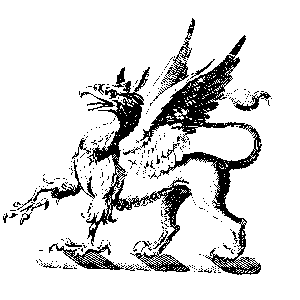



Halliwell Coat of Arms
Surnames became necessary when governments introduced personal taxation. In England this was known as Poll Tax. Throughout the centuries, surnames in every country have continued to "develop" often leading to astonishing variants of the original spelling.
A Coat of Arms granted to the Halliwell family consists of a gold shield with three silver goats trippant, and attired in gold, on a red bend. The first recorded spelling of the family name is shown to be that of Osbert de Haliwell', which was dated 1200 - "The Pipe Rolls of Suffolk", during the reign of King John, known as Lackland, 1199 - 1216.
The two main symbols in the Halliwell blazon are the bend and goat. The three main colours are gules and argent . The heraldic metal Gold, often shown as a bold, bright yellow colour is said to show “Generosity and elevation of the mind”. Later heralds, of a more poetic nature liked to refer to it as Topaz, after the gemstone, and, for obvious reasons associated it with the Sun. In drawings without colour it is usually represented by many small dots, or by the letter ‘O’.
The bold red colour on a heraldic shield is known as gules. It has a long history within heraldry, it is known that one of those who besieged the Scottish castle of Carlaverock in 1300 was the French knight Euremions de la Brette who had as his arms a simple red shield. The word gules is thought to come from the Arabic gule, or “red rose”. Later writers associated it with the precious stone ruby and the metal iron, perhaps because of the red glow of iron in the heat of the blacksmith’s forge.
Argent is the heraldic metal Silver and is usually shown as very pure white. It is also known more poetically as pearl, moon (or luna). In a sketch or drawing it is represented by plain, unmarked paper.
The bend is a distinctive part of the shield, frequently occurring and clearly visible from a distance – it is a broad band running from top left to bottom right. Indeed, so important is the bend that it was the subject of one of the earliest cases before the English Court of Chivalry; the famous case of 1390, Scrope vs Grosvenor had to decide which family were the rightful owners of Azure, a bend or (A blue shield, with yellow bend). The bend is held in high honour and may signify “defence or protection” and often borne by those of high military rank.
In the mediaeval period there was no real perceived difference between real and mythical animals, after all, much of the world remained unknown and who was to say what strange and magical creatures existed in distant lands? Nevertheless, real animals are perhaps one of the most common sights on coats of arms, especially animals of European origin. The goat Is a typical example of these. Guillim, writing in the 17th century suggested that it may represent a “martial man who wins victory by…policy [rather] than valour”, a diplomat by any other name.
Origins of Halliwell:
This English surname with spellings such as Hallawell, Hallewell, Helliwell, Holliwell, and Hollowell is of geographical origin. It acquires from any of places named with the Old English pre 7th Century components “halig” which means “holy,” and “well(a),” which means a well or water source.
These places are;
Halliwell in Lancashire noted as Haliwell near the year 1200.
Holwell in Dorset and Oxfordshire developing respectively as Halegewelle and Haliwelle in the Domesday Book of 1086.
Halwell and Halwill in Devonshire noted as Halgewilla in 1086, and
Holywell in Northumberland, Kent, Cambridgeshire and Cornwall.
There is also a place in Clwyd named as Holywell.
John de Halewell, of Halliwell, was Dean of Lancashire in 1288, and in 1327 Editha atte Holywelle appeared in the "Subsidy Rolls of Somerset". An interesting name ancestor was James Orchard Halliwell, (1820 – 1889), who arranged and explained the Stratford-on-Avon archives and composed much of the history of the town. His “Life of Shakespeare” appeared in 1848.
Variations:
More common variations are: Halliawell, Hallwell, Haliwell, Halliwel, Halliell, Helliwell, Hallewell, Hallowell, Holliwell, Hallawell
England:
The surname Halliwell first appeared in Lancashire where they held a family seat from very old times. Some say well before the Norman Invasion and the coming of Duke William at Hastings in 1066 AD.
The very first recording spelling of the family was shown to be that of Osbert de Haliwell, dated about 1200, in the “The Pipe Rolls of Suffolk.” It was during the time of King John who was known to be the “Lackland,” dated 1199 – 1216. The origin of surnames during this period became a necessity with the introduction of personal taxation. It came to be known as Poll Tax in England.
Notable People:
James Halliwell-Phillipps (1820–1889), was a British Shakespearean authority.
Ernest Halliwell (1864–1919), was a South African cricket player.
Joel Halliwell (1873–1956), was a British soldier and winner of the Victoria Cross.
Kenneth Halliwell (1926–1967), was a British actor and author.
Leslie Halliwell (1929–1989), was a British film biographer.
David Halliwell (b. 1948) former English Cricketer.
Geri Halliwell (b. 1972), is a British musician.
The Crest:
